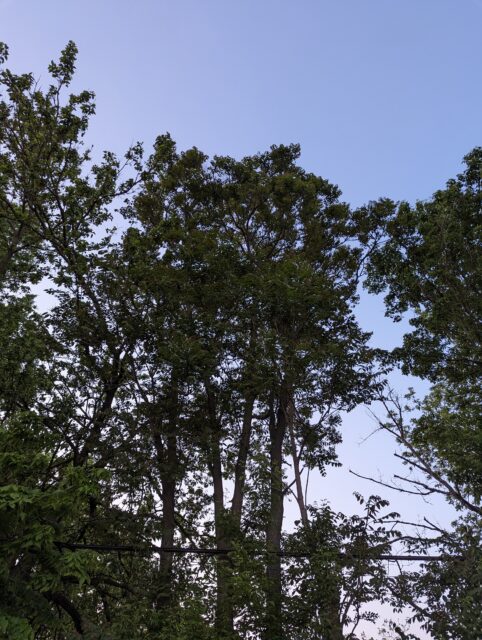
Common Name: American Hackberry
Scientific Name: Celtis occidentalis
The American Hackberry is a broad-leaved tree with compound alternating leaves, that are toothed along the edges. This tree was located in Obetz, Ohio. This residential area has many different species of coniferous and deciduous trees. Hackberry has small, edible berries that change from light orange to dark purple. This fruit is eaten by many animals, but can also be used for food and medicinal purposes. (Damien Campbell, 2018)
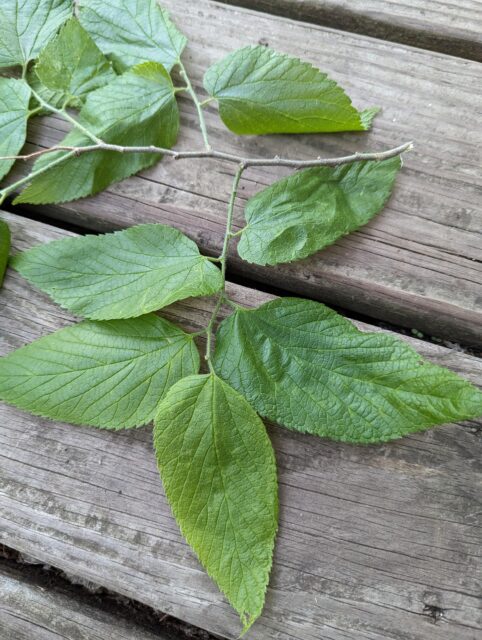
Leaves of the American Hackberry tree.
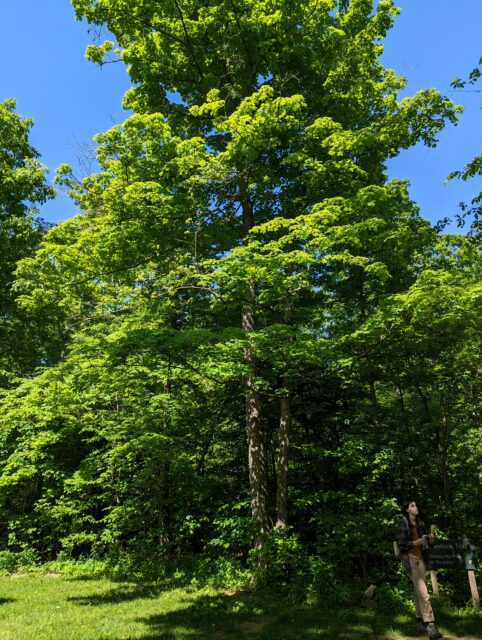
Common Name: Red Maple
Scientific Name: Acer rubrum
The Red Maple is a broad-leaved tree with opposite, simple leaves, that are 3 to 5-lobed. This tree was located at Battelle Darby Creek Metro Park. This natural area has many different plant species and a high limestone distribution. Red maples can start producing seeds after four years and can live for over 100 years (Chesapeake Bay Program).
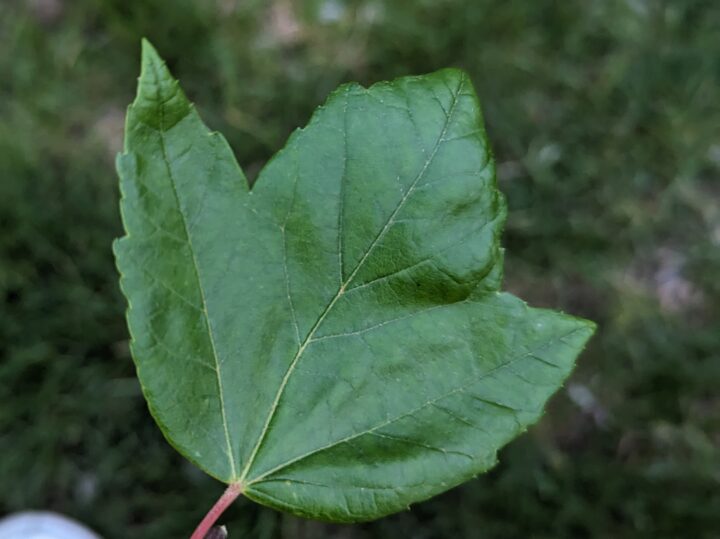
Leaves of the Red Maple tree.
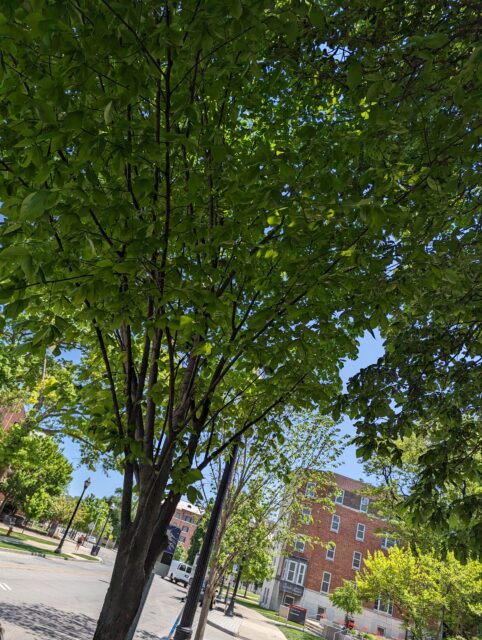
Common Name: English Elm
Scientific Name: Ulmus procera
English Elms are broad-leaved trees with alternate simple leaves. They are usually 1 ½ to 3 Inches long. This tree was located on The Ohio State University Campus. This environment hosts many different plant and tree species, both carnivorous and deciduous. Elm trees used to be associated with death as they would drop dead branches, and the wood was also often used in coffins (woodlandtrust, n.d).
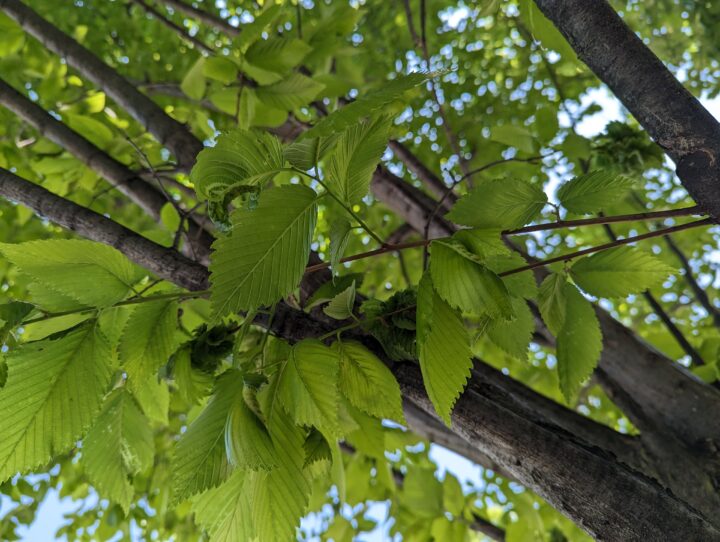
Leaves of the English Elm tree.
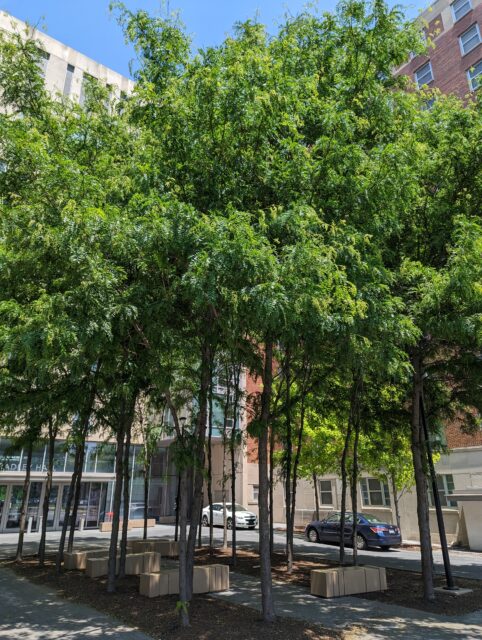
Common Name: Honey Locust
Scientific Name: Gleditsia triacanthos
Honey Locusts are broad-leaved trees with alternate compound leaves. These leaves are usually feather-compound. This tree was located on The Ohio State University Campus. This environment hosts many different plant and tree species, both carnivorous and deciduous. Honey Locusts do not make honey, but are known for the sweet taste of their seeds. They used to be used as a coffee substitute as well (Sebastian O’ Connor).
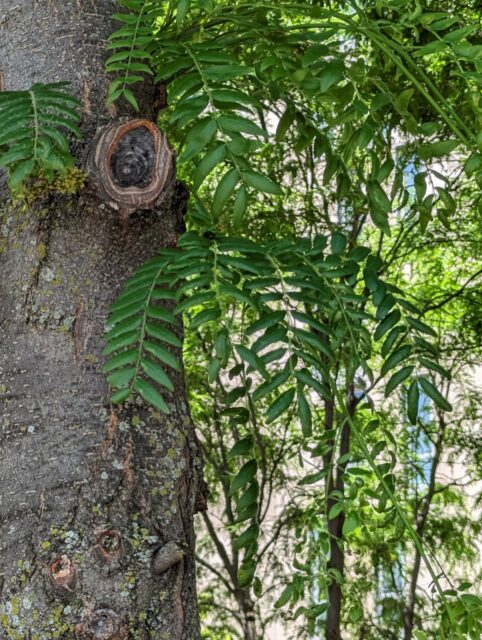
Leaves of the Honey Locust tree.
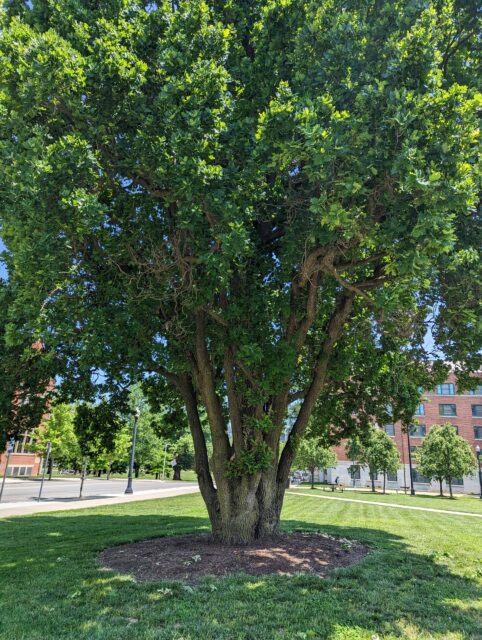
Common Name: Chinquapin Oak
Scientific Name: Quercus muehlenbergii
Chinquapin Oaks are broad-leafed trees with alternate simple leaves. They have 8-13 pairs of sharp teeth and are 4-9 inches. This tree was located on The Ohio State University Campus. This environment hosts many different plant and tree species, both carnivorous and deciduous. Thousands of miles of fences in Ohio, Kentucky, and Indiana were made by early pioneers from this oak wood. The wood also fueled steamships from Pittsburgh to New Orleans (Arborday,n.d.).
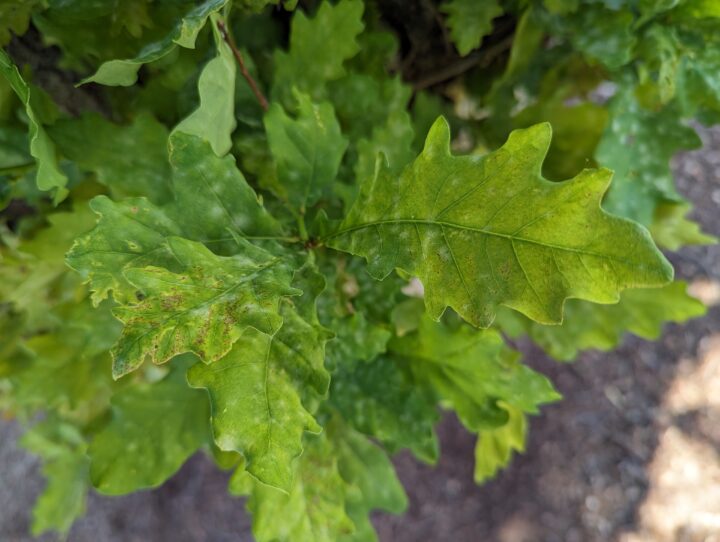
Leaves of the Chinquapin Oak tree.
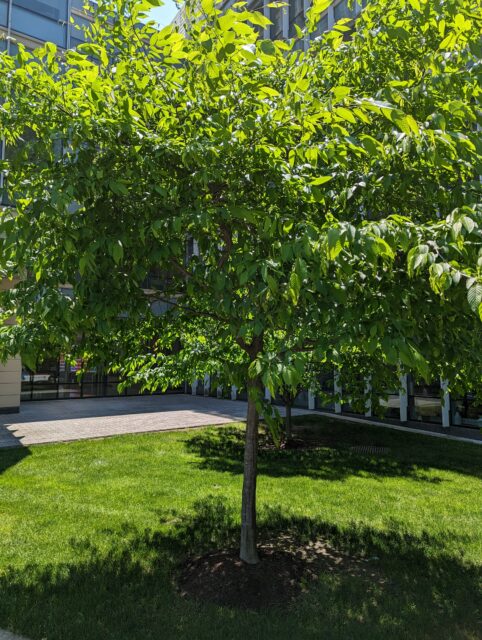
Common Name: Hornbeam
Scientific Name: Ostrya virginiana
Hornbeams are broad-leafed trees with alternate, simple leaves. They have pointed leaf tips and buds that are round and greenish. This tree was located on The Ohio State University Campus. This environment hosts many different plant and tree species, both carnivorous and deciduous. Hornbeam has monoecious flowers, meaning that there are both male and female catkins on the same tree. Romans used the wood from this tree to make chariots, due to its natural strength (woodlandtrust, n.d.).
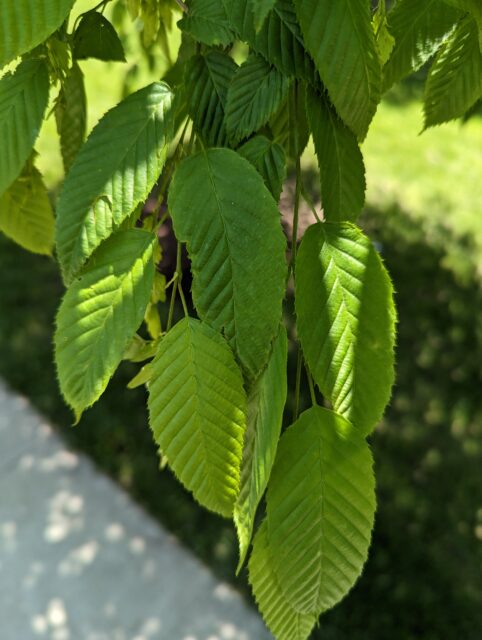
Leaves of the Hornbeam Tree.
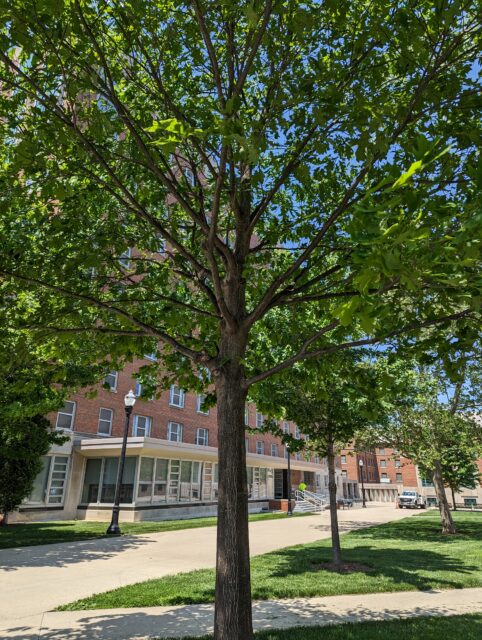
Common Name: Red Oak
Scientific Name: Quercus rubra
Red oaks are broad-leafed trees with alternate, simple leaves. They are hairless, thin, and moderately lobed. This tree was located on The Ohio State University Campus. This environment hosts many different plant and tree species, both carnivorous and deciduous. Ohio is home to the largest red oak tree, with a height of 92 feet and a circumference of 337 inches( Zack DeAngelis, 2021).
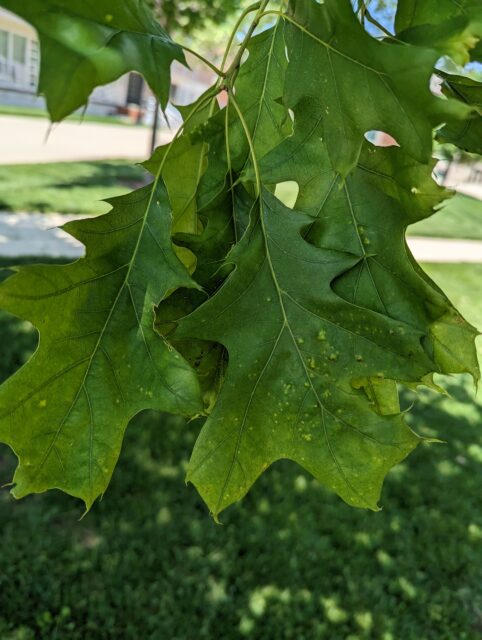
Leaves of the Red Oak Tree.
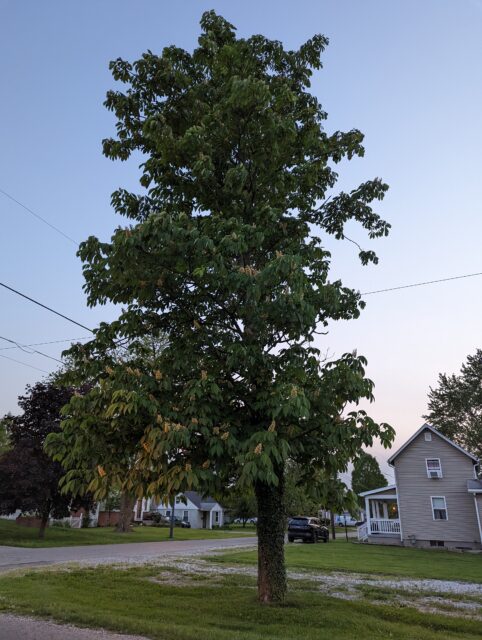
Common Name: Ohio Buckeye
Scientific Name: Aesculus glabra
Buckeyes are broad-leafed trees with opposite compound leaves. Their leaves have a palmate arrangement, usually with 5 leaflets. They have fruit husks with weak thorns as well. This tree was located in Obetz, Ohio. This residential area has many different species of coniferous and deciduous trees. The name of the tree comes from its seeds, the buckeye. These seeds are poisonous and give off an unpleasant odor (museumstateilus, n.d.).
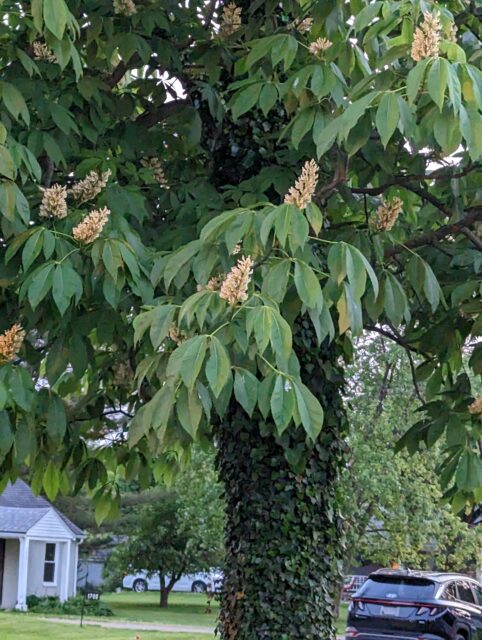
Leaves of the Ohio Buckeye Tree.
Sources
https://sciencing.com/what-are-the-native-plants-of-venezuela-12214715.html
https://www.chesapeakebay.net/discover/field-guide/entry/red-maple
https://tinyurl.com/yuv6jwbf
https://www.arborday.org/trees/treeguide/TreeDetail.cfm?ItemID=875#:~:text=Early%20pioneers%20used%20its%20straight,railroads%20that%20crisscrossed%20the%20Midwest.
https://tinyurl.com/2s6zr5jw
https://www.museum.state.il.us/muslink/forest/htmls/trees/A-glabra.html#:~:text=Interesting%20Facts,spot%2C%20resembling%20a%20buck’s%20eye.
